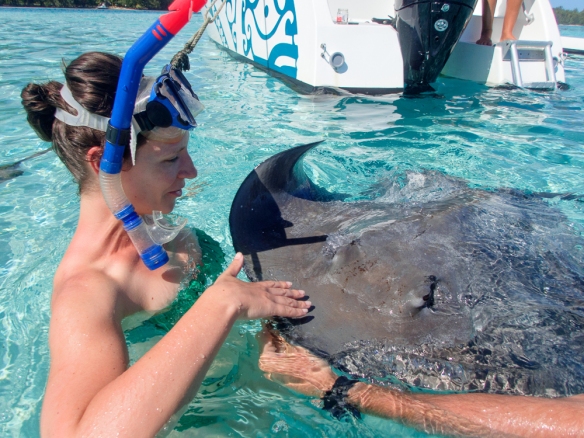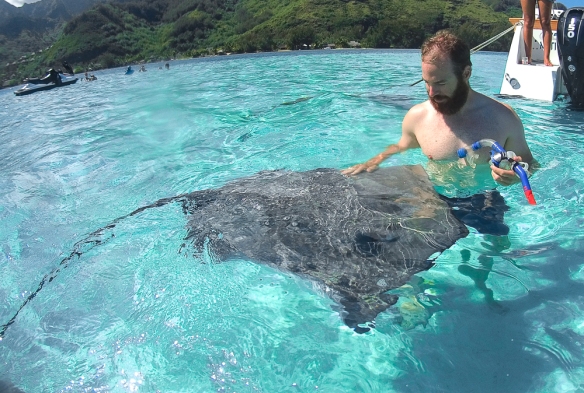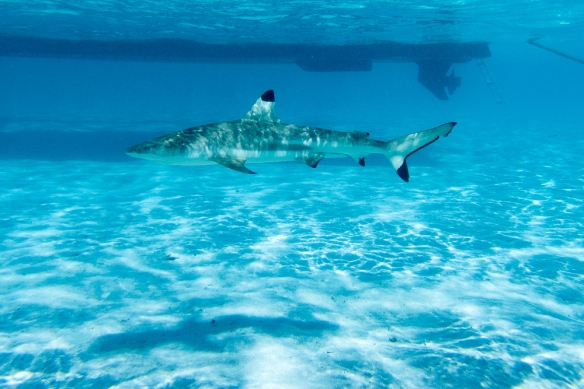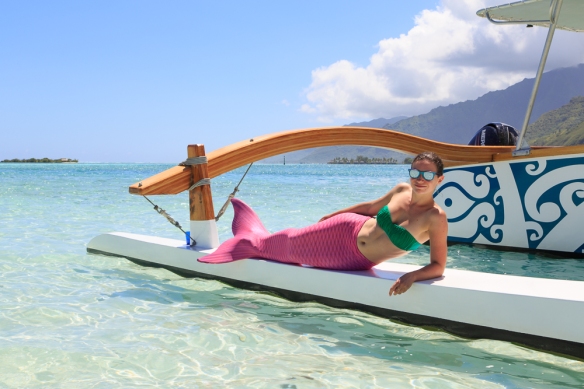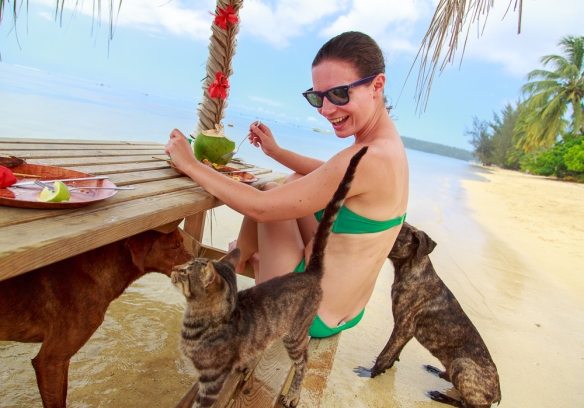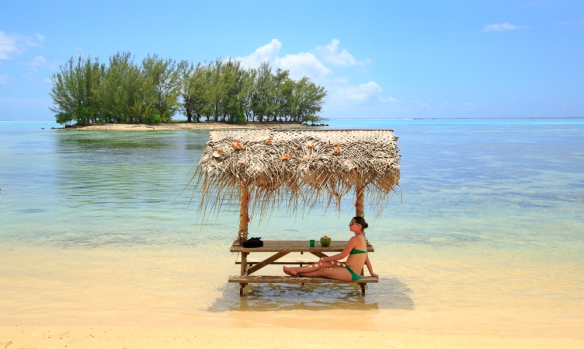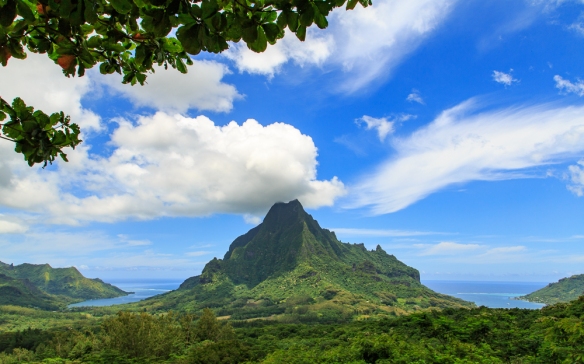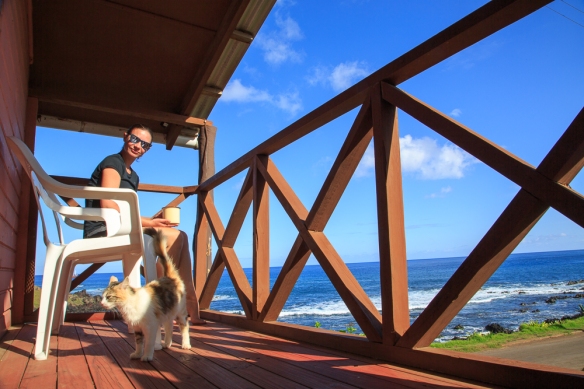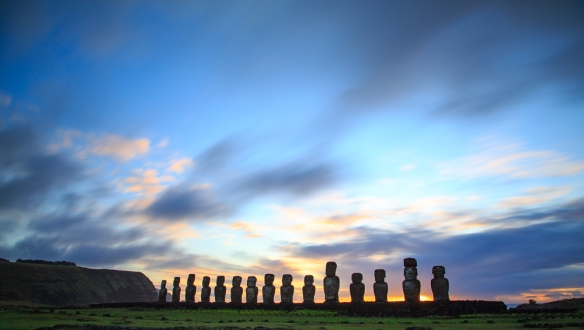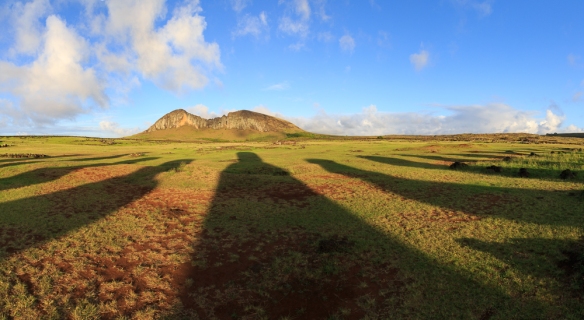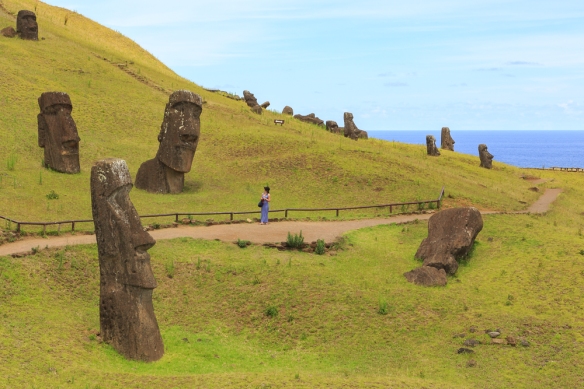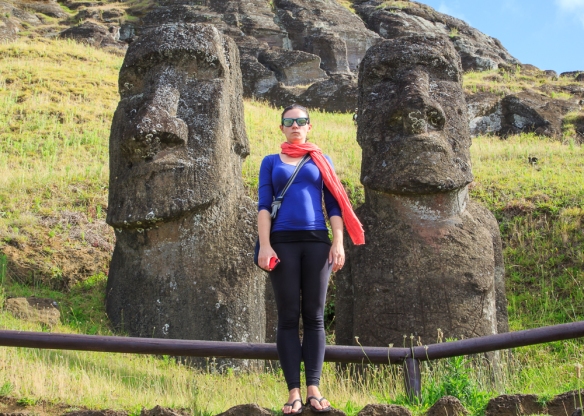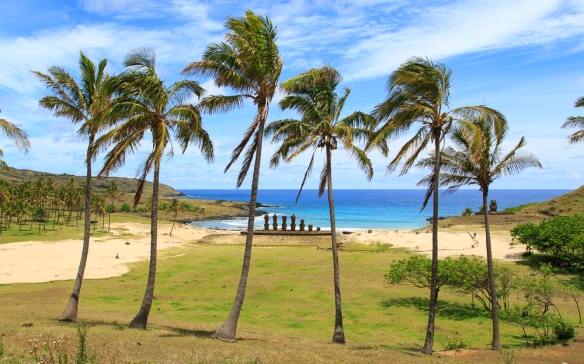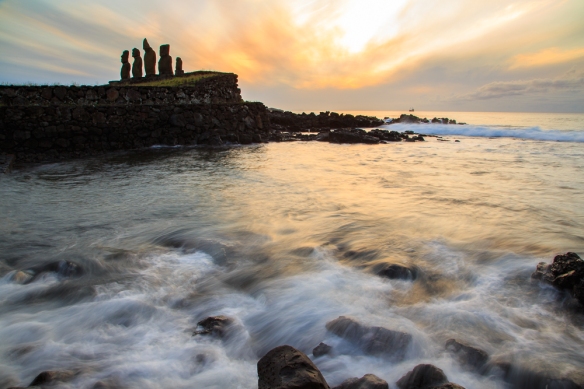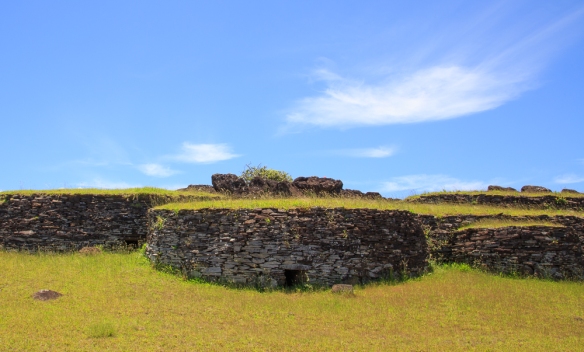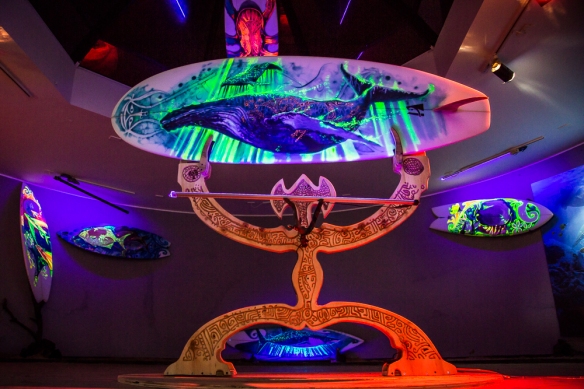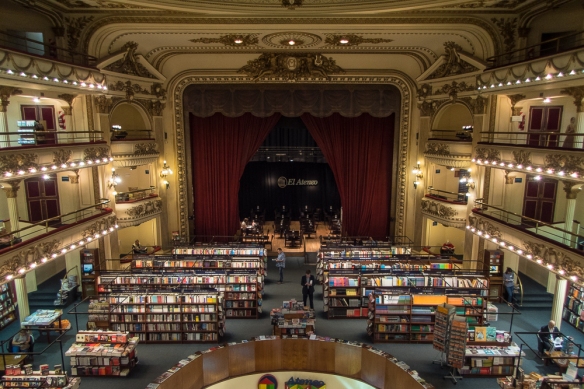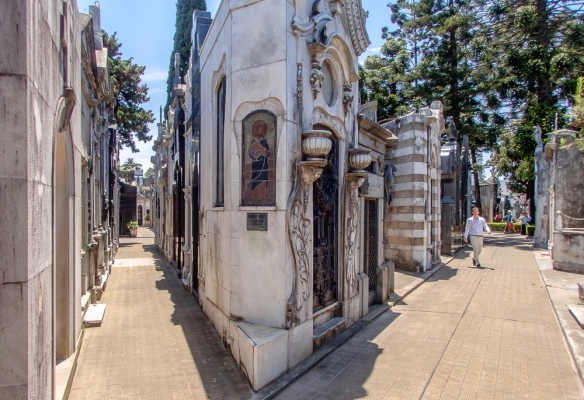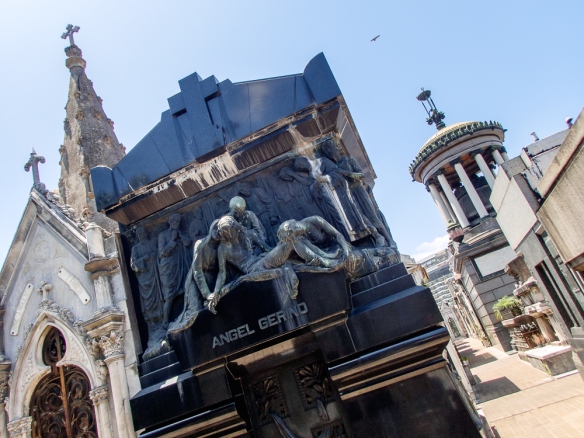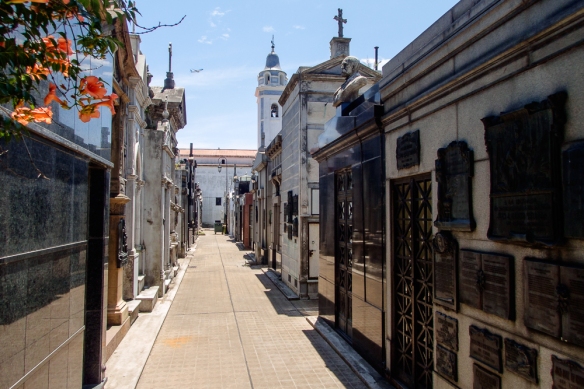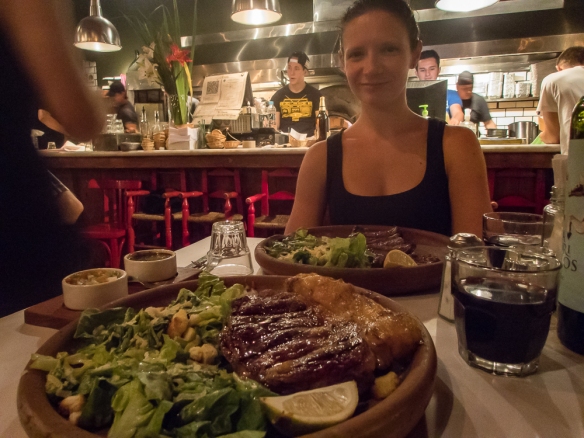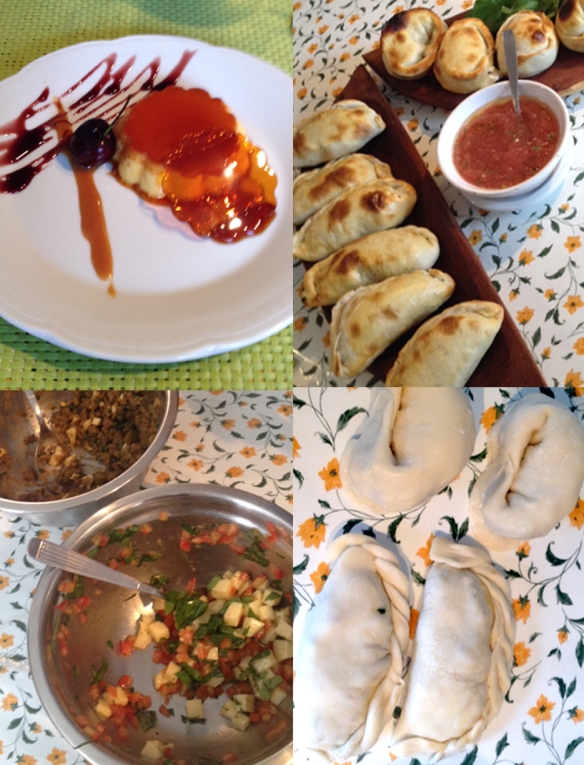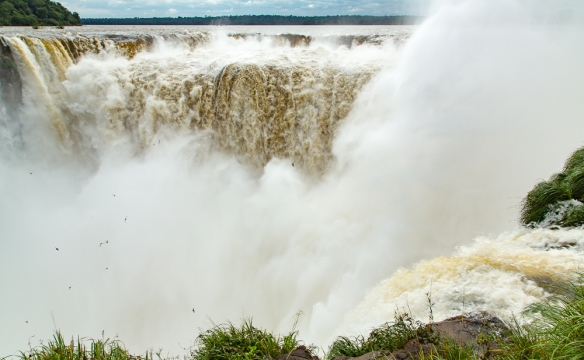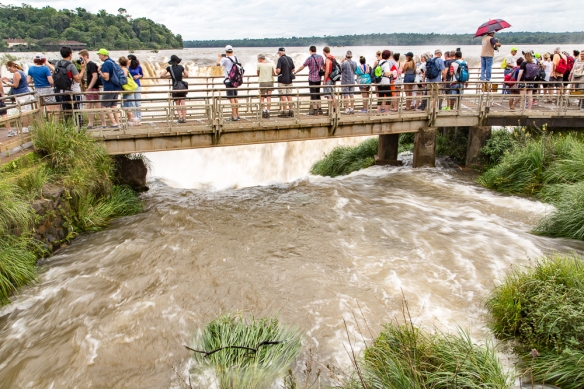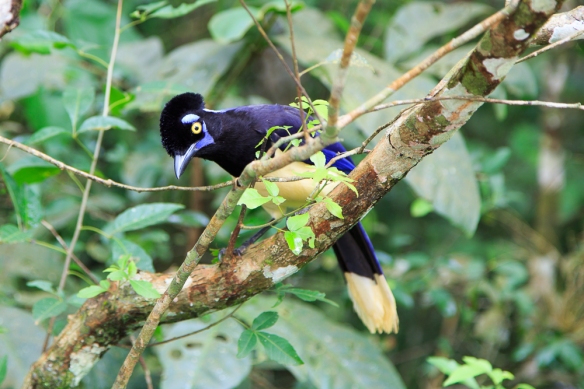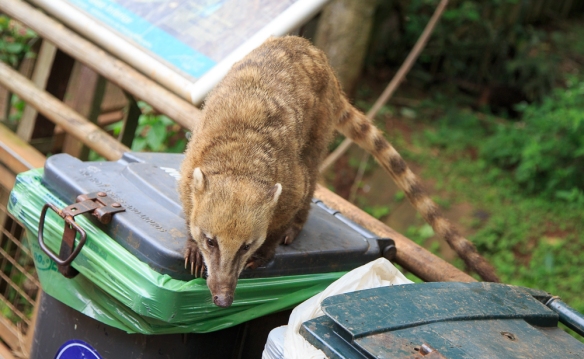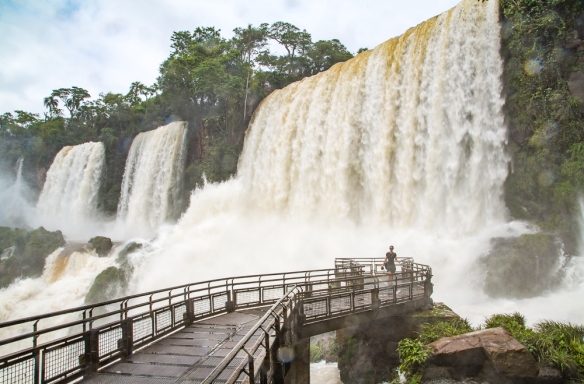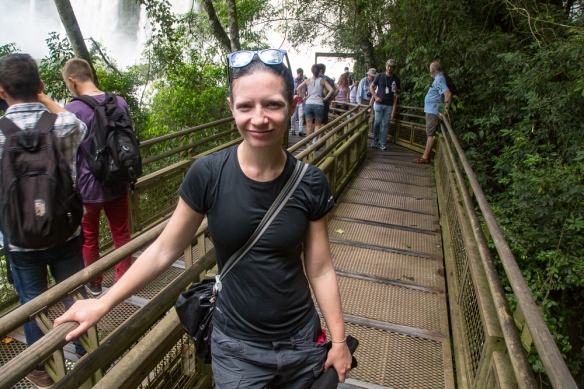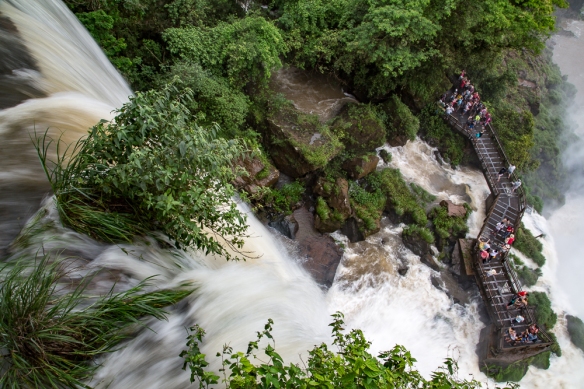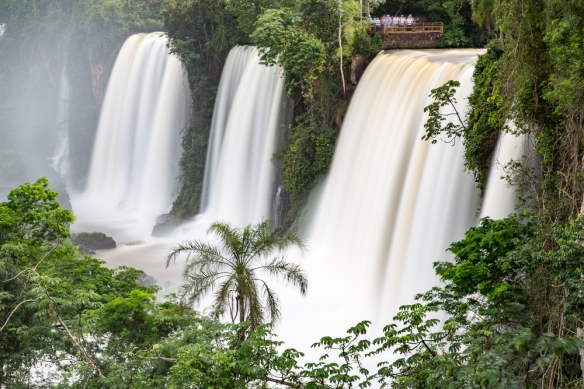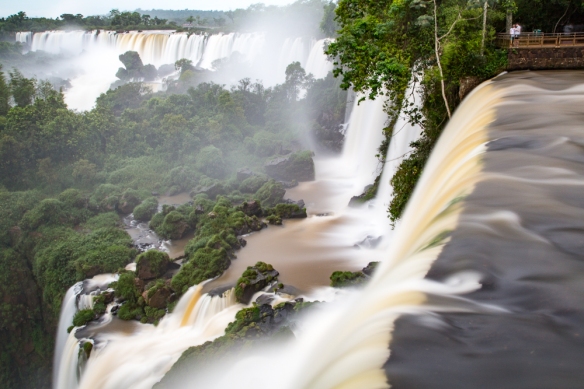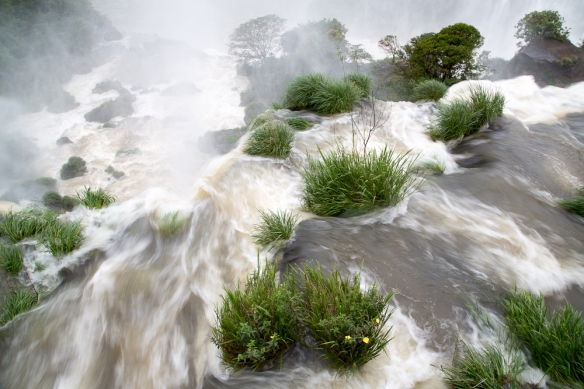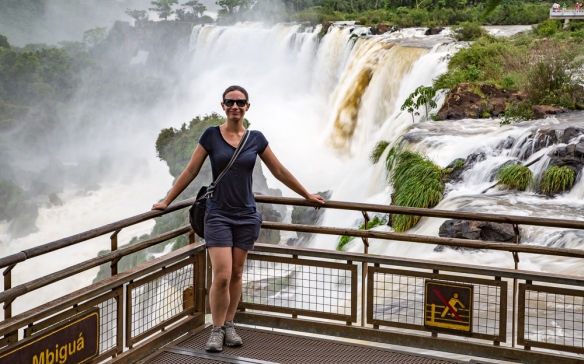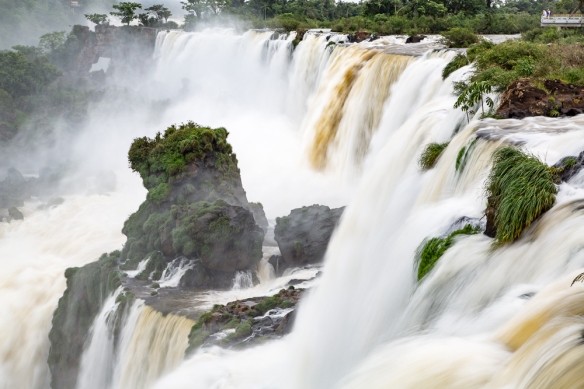Hello again,
Well, this is it! Our final day before returning to Australia. A part of us thought this trip would never end, but here we are. It’s been 3.5 years since we moved to London and it’s fair to say we’ve got mixed feelings about the return to Sydney. There are lots of things we’re looking forward to – seeing family and friends, the beaches, the food (fresh fruit, seafood, BBQs), and ultimately, not being on the road for a while.
Here’s a few stats on the last seven months to give you some perspective of how we’ve spent our time:
- Total travel days: 222
- Countries visited since leaving London: 11
- Different beds: 67, plus six nights camping
- Flights: 19 (with each connection counted separately)
- Bus rides: 33 (excluding day tours and local transport), roughly 200 hours
- Longest bus ride: 19 hours, including a game of bingo before bed
- Ferries: 12 (excluding day trips), including one four day journey
- Books finished: Tim 3, Lesley 44 (one book every five days, quite obscene)
- Blog posts: 40. Mostly by Tim whilst Lesley was reading
- Times we didn’t get all of our clothes back from the laundromat: Lesley 2, Tim 0
Phew! It’s all been worth it though, without a shadow of a doubt – the experience is it’s own reward. These days we think of travel as an essential part of a person’s education…it’s changed us both, for the better we hope. Whilst it’s so hard to rank or compare everything that has happened during this big trip, these are some of the things we’ll never forget (and a few photos to jog the memory)…
- Hot air ballooning in Cappadocia. A contender for Lesley’s favourite moment of the trip, and it happened in the first couple of weeks!
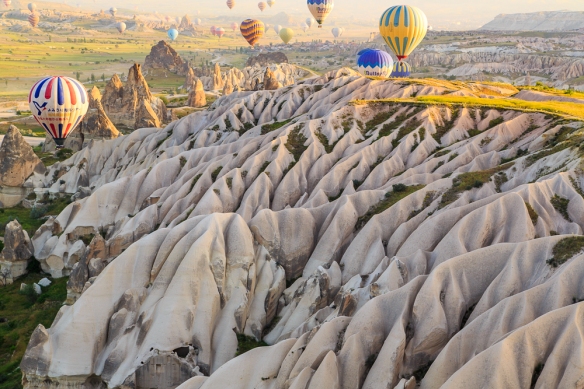
- An almost private Turkish Gulet cruise…
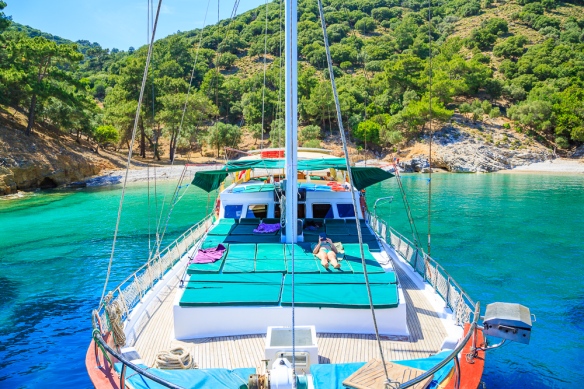
- A week in Crete; great value, great scenery, great history. The best tzatziki
- Getting engaged in Santorini…’nuff said
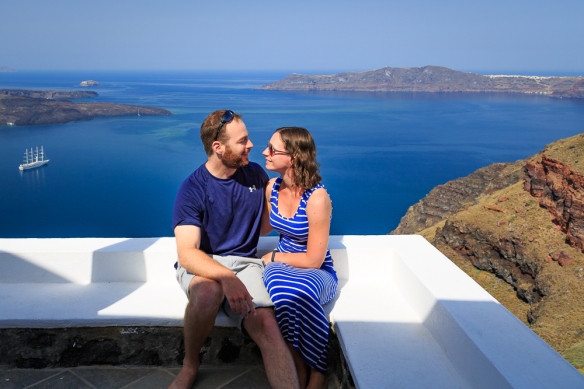
- A day on the water in Sardinia with great company, amazing beaches and plentiful wine
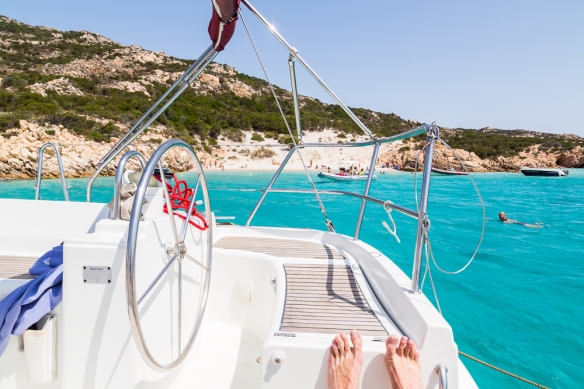
- Swimming with sea lions in the Galapagos
- Staying at Charlie’s in the Cordillera Blanca, for both the landscape and the serendipitous encounter with an inspiring (if eccentric) individual
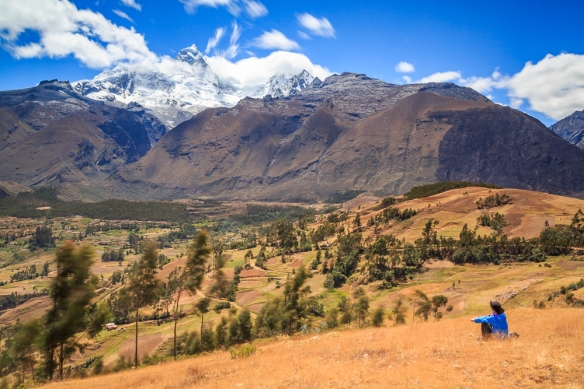
- Witnessing Machu Picchu emerge from the early morning clouds; even with high expectations, this superstar attraction blew us away
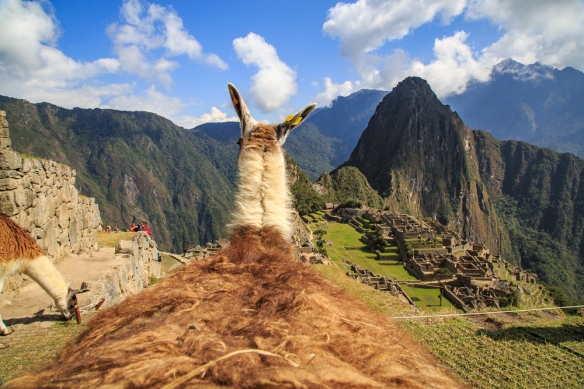
- Seeing a Jaguar in Manu National Park, and more generally surviving that adventure
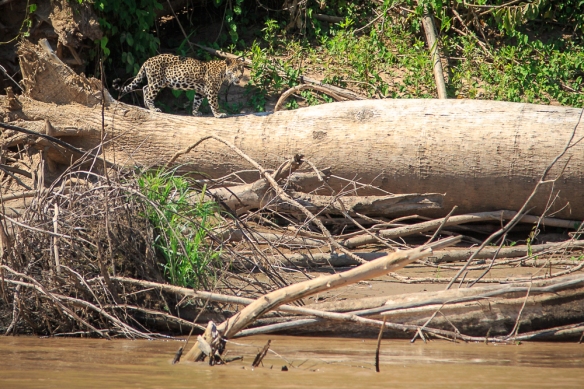
- Enjoying hot springs by starlight on our Salar de Uyuni tour with good company and a few bottles of wine
- A week in San Pedro de Atacama; great landscapes and Chilean civility = win, especially after Bolivia
- Drinking a little too much and loving it in the Colchagua Valley
- Watching the sun rise at Las Torres after hiking up in the dark, probably Tim’s overall number one moment of the trip for lots of reasons. Patagonia in general was an incredible highlight, made all the more special by the people we met and continued to bump into
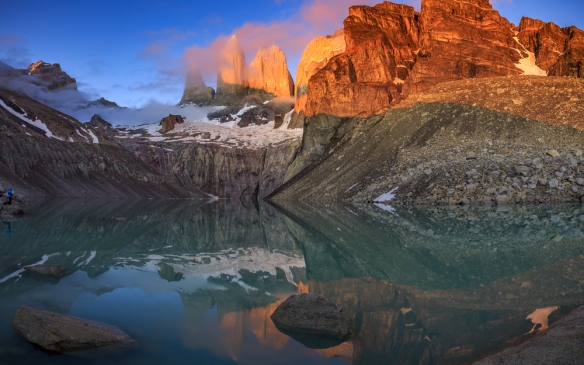
- Getting to know the enigmatic Moai of Easter Island, and watching the sun rise over Ahu Tongariki
Of course, as we mentioned, the feelings are mixed, and we can see there are challenges on the horizon. A regular part of the last 3.5 years has been the insane level of newness that we’ve lived with. We’ll have to work harder to maintain some of that; we’re planning to be regular tourists in Australia (all suggestions welcome on favourite destinations and activities), and our travel wish list has only grown. Far off destinations like Europe, which we love, will be sorely missed; creating a lifestyle that enables us to visit them regularly is something we’ll be working on. And that’s a hint of perhaps the biggest challenge of all… creating a work-life balance we can both live with, which in reality would be hard anywhere. Travel helps with this too – part of the great thing about being on the road is all the awesome and inspiring people we’ve met. Just yesterday we were on a tour with a German couple who employed a management team to run a business they’d founded and built, enabling them to spend months of the year travelling and working remotely. We love that. We’ve learnt that seven months of travel is a long stint; about three months is perfect, any more and you start wishing for a week off! The ideal lifestyle for us is a stable base in Sydney, a challenging and rewarding work life, with the flexibility to travel or work remotely every 2-3 months. Figuring out what you want is half the battle right?
Figuring out what you don’t want is important too, and Tim has decided banking isn’t for him. Ever since leaving KPMG he’s been completely disillusioned with it. We’re both high achievers, and perhaps we try to please others to a fault. One of the nice things about where we are now is that we don’t feel like we have anything to prove to anybody. It’s time to make a change for the better…life is too short to hate what you do. Plus, he is keeping the beard.
Of course we’ve learnt about each other too. Being together day and night for such a long period of time will tend to do that; with our best and worst qualities both being exaggerated (no need to record these here). There have been surprisingly few big arguments on the trip, though plenty of times when we’ve both felt tired and snappy. Seems like a good sign. Time apart will be extremely weird at first, but very healthy.
So what comes next for us? Lesley doesn’t start work until February, so we have about six weeks of the Australian summer to enjoy. We’re already contemplating taking a week or so to do the Greater Ocean Road in a “Wicked Camper”, but we’ll see how we feel. Tim has a meeting with a recruiter lined up on the 22nd, but the job search will probably take months, especially given how quiet things will be in January. Meanwhile he wants to investigate establishing a photography business (strictly a hobby), even if it’s just a way to purchase camera equipment with tax advantages. We’ll be sussing out wedding venues, though Athol Hall sounds like it’ll be a winner, and scheduling that for late 2016. Beyond that we’re not really sure. Living overseas again has come in and out of vogue with us, but we currently feel it isn’t necessary to achieve the balanced life we want. What we do know is that we want to continue enjoying the little things and prioritising experiences over material goods; some of our best moments on this trip have been sunsets or sunrises in the great outdoors, and they’re both free.
If you suddenly have the urge to travel and want to know how we did 7 months on the road, carry on only, we’re breaking from tradition and providing some “useful” information below. This blog was always more about giving a record of our experiences, but we figure we’ve gotten pretty good at this, so why not strike while the iron is hot. Optional reading of course.
So, thanks for reading and following along with us! The 90 entries to date will become a book (another lengthy project for Tim) and eventually adorn a coffee table somewhere. We’re not sure yet whether this will be the last post, as we’ve got a lot more in us. Either way, this has been a crazy ride that we’d do all over again… we’re excited for the next chapter.
Cheers, and see you soon.
TL
Appendix: On being a value-loving pro-travelling carry-on only couple
Over time we’ve found a number of sites that were very useful. For accommodation booking, our favourites are:
- Airbnb: we generally went for self-contained apartments. Especially when travelling for a long time it made a big difference to be able to cook our meals and have private living space.
- Booking.com: hotel / B&B accommodation with the added benefit that you often don’t have to pay anything until you arrive.
- TripAdvisor: great for peer reviews on activities and restaurants. Key learning from reading thousands of reviews – no matter what it is, someone will say it was the best experience of their life, someone else will say it was terrible, someone will say too expensive and someone will say very good value. The average scores are helpful.
- HostelWorld: for private rooms, ideally with private bathrooms, in hostels or B&Bs. Good and cheap, with deferred payment.
Getting around: We downloaded an app called Pocket Earth Pro for a few dollars from the App Store and it has more than paid for itself! You can download maps for most places and then mark your accommodation, restaurants / bars, activities and routes between places. Best part – it can then be used offline using your GPS and the data stored in the app, so no expensive use of google maps on the go. Speaking of, we never moved to our prepaid international SIM cards (though we carried them for the whole seven months); Wifi and data based communications generally sufficed.
Keeping fit: Despite the hundreds of kilometres of walking we’ve done, either sightseeing or trekking, we wanted a different way to keep fit and maintain strength. We brought a skipping rope but never used it. Lesley got a tip from a work colleague on an app called the Seven Minute Workout Challenge. At first we couldn’t even get through one set, then we worked our way up to a peak of three. We’ve now settled back around two but it’s a great workout that you can do almost anywhere in a short time.
Packing
We decided to go with carry on luggage only for most of the trip. When Lesley first heard this suggestion her response was essentially “you’re a crazy person”, but she was slowly won over. The Travel Independent packing list was extremely useful (http://www.travelindependent.info/whattopack.htm). It took a LOT of planning and preparation, and some new purchases, but it really paid off and ultimately, you realise how little you need. Here’s what we took.
Lesley’s bag:
- Kelty Redwing 40 litre. When fully packed it definitely pushes the boundaries of allowable cabin luggage, but we never had any problems with it. Lesley calls it the Mary Poppins bag as there always seems to be space. The main downside? There’s no secure way to lock it. Overall: comfortable, a good fit and it’s stood the test of time well. She’ll be getting plenty more use out of it in years to come.
- Supplementary small day pack sourced from Jack Wolf in the UK which folds up to almost nothing. The lining is on its last legs, but it has withstood seven months of punishment well and it wasn’t expensive.
- For both of us, clothes were packed into vacuum seal bags, which helped to partition and save space. Wear and tear was an issue, more spares would’ve been good.
Tim’s Bag:
- Tim was insane in that he wanted to do carry on and also take professional camera equipment. Without the camera gear, a 30L pack would have done with space to spare! After weeks of research he found F-Stop bags, ultimately choosing a Loka Ultralight 40L, plus camera insert. All he can say is that it worked, and the extremely light bag withstood the punishment, but he really missed the convenience of his LowePro Flipside bag…that thing is a gem.
- This was supplemented with a small crappy backpack that the camera insert went into. Advantage – it didn’t look like a camera bag. Disadvantage – the camera wasn’t easy to access.
Shoes:
We spent an undue amount of time considering and finding the ideal footwear for this trip. In the end, we decided full hiking boots were too bulky and we only regretted that once when walking long days in Torres Del Paine. In the end Lesley chose…
- Mendl Gore-Tex trail runners – not a full hiking boot but a good walking shoe with a very stable base.
- A pair of fold up ballet flats (“Butterfly Twists”) – going out shoes. These have a foam base and they are so comfortable – as long as you’re not walking over a rocky, uneven surface.
…and Tim chose a similar low cut hiking shoe, though it was non-waterproof for added breathability. In the end, that was fine. We also both took a pair of Havianas, to prove we were Australian.
Clothing: our itinerary took us from the minuses to over 30 degrees celcius, so versatility was key (read, layering). Lesley took…
- 1 x fleece
- 1 x woollen cardigan
- 2 x t-shirts
- 2 x singlets
- 3 x Uniqlo long sleeve shirts – light yet suitable for cold weather
- 1 x long dress, the classic blue and white stripe
- 1 x ‘nice’ long skirt for going out
- 1 x everyday shorts
- 1 x leggings
- 1 x jeans. Despite being heavy, we just would have missed them too much.
- 1 x hiking pants
- 3 x exercise shirts, quick dry
- 2 x bra, sports and regular
- Various pairs of underwear. Advice, take as many as you can fit
- 5 x pairs of socks. Mix of hiking, ankle socks and a long / warm pair
- 1 x waterproof jacket wth hood – North Face
- 1 x set of thermals
- 1 x beanie and 1 x gloves – bought in South America, a good move
- 2 x scarves, one light which doubled as a sarong
- 1 x bikini
…and as for Tim…
- 1 x fleece
- 5 x shirts, including one long sleeve
- 1 x singlet – mainly for chilling out in
- 1 x button down going out shirt – got sent home to Australia after Europe, where it was more useful, and haven’t missed it since
- 1 x everyday shorts. These got a hole in them in Corsica and got sent home halfway through, better off without
- 1 x gym shorts
- 1 x jeans
- 1 x convertible hiking pants (North Face). Good quality and a staple in South America
- 3 x underwear – Uniqlo lightweight
- 5 x pairs of socks, mix as per Lesley
- 1 x waterproof jacket wth hood – North Face
- 1 x thermal trousers
- 1 x Beanie and 1 x gloves
- 1 x boardies
Electricals:
- MacBookPro plus charger: invaluable travel companion for entertainment, photo editing, blog writing, etc.
- External hard drive for backup and portable entertainment
- Kindles… self explanatory
- iPhone: navigation, maps, exercise, entertainment
- Earphones
- GPS: perfect for multiple car rentals in Europe. Posted home when no longer needed
- Camera gear: 5D Mark III, one 24-105mm f/4 lens, Gitzo Carbon Fiber Traveller Tripod, Really Right Stuff Ball head plus pano equipment, Lee Big Stopper, Lee Graduated Filter set, Remote Shutter Release Kit, Polarising Filter, Spare Battery, chargers
- Compact Olympus TG-4 waterproof camera for underwater shots and when uncomfortable using big camera. Shoots RAW, unlike a GoPro.
- Adapter and a bunch of cables
- Black Diamond head torch… really good quality and very useful
- Small Maglite torch… died on the trip. Not so useful.
Common:
- Silk sleeping sheets, perfect for when renting sleeping bags or when the sheets somewhere look nasty
- Microfibre towels, fold up to almost nothing
- Eye masks…essential again
- Blow up pillow for plane / overnight bus rides
- Ear plugs. Lindsey from the States taught us to roll them between our fingers before inserting in the ear. Good tip
- Very basic first aid kit
- Waiters friend… annoyingly hard to find in SA. Maybe there is a check in friendly version online? If not someone should invent one and make millions.
- LowePro waterproof bag covers, for when you can’t avoid getting wet
Things we took and didn’t use / left behind along the way:
- Skipping rope: we just didn’t feel the need to use it
- Umbrellas: turns out if it’s small enough to fit nicely in your bag, it’s probably flimsy and too small in a storm
- Booties for using on rocky beaches: Lesley used these a couple of times in Europe, Tim not at all
When it’s all laid out in a list like that, it does sound like a lot! The true testament is that very little will be discarded after this trip – it has almost all stood the test of time well and will continue to be worn / used by us in the future. After 7 months of solid use that is strong praise indeed!
The only downsides we can both think of for doing carry-on only are:
- Not being able to purchase as many gifts and souvenirs as we may have liked – we had to think about (expensive) postage or the ability to carry it for months on end
- Losing waiters friends along the way because we couldn’t check them in
- Having to manage your liquids to 100ml per item for some flights. This was far more of an issue in Europe than South America where they mostly didn’t seem to care, though we never knew that in advance
- Being challenged on an inconsistent basis when someone at security suddenly decided something we were carrying was a weapon, e.g. a tripod or hiking poles
- Not having a pair of shoes to work out in
Overall, we are both very glad we made this choice and there’s been more than a few times we’ve felt smug as we’ve watched other people stagger under the weight of their gigantic backpacks. If you’re tempted, give it a go!

